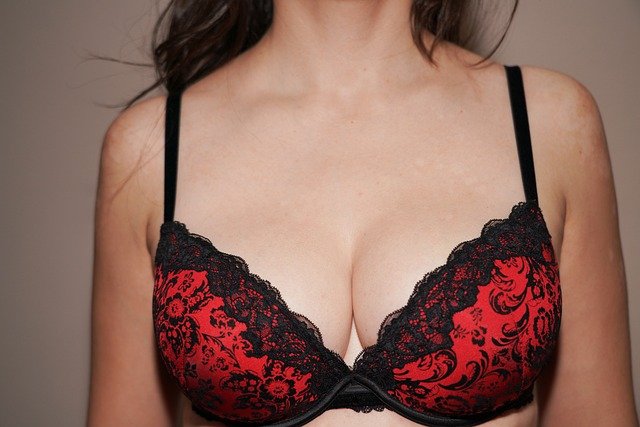Sheer Women's Underwear: A Practical Guide to Fabrics, Fit, Care, and Styling
Sheer underwear has become a staple in many women's wardrobes, offering a delicate balance between coverage and invisibility under clothing. This comprehensive guide explores the intricacies of transparent and semi-transparent undergarments, from understanding different fabric compositions to mastering proper care techniques. Whether you're new to sheer lingerie or looking to expand your collection, understanding the nuances of transparency levels, fit considerations, and styling options will help you make informed choices that enhance both comfort and confidence.

Sheer underwear represents a sophisticated category of intimate apparel that combines functionality with aesthetic appeal. These delicate garments serve multiple purposes in a modern wardrobe, from creating seamless lines under fitted clothing to adding an element of elegance to personal style. The growing popularity of sheer undergarments reflects changing attitudes toward lingerie as both practical necessity and personal expression.
Understanding Sheer Fabrics and Transparency Levels
Sheer fabrics vary significantly in their level of transparency, ranging from barely-there mesh to subtly translucent materials. Common fabric types include fine mesh, tulle, chiffon, and specially engineered synthetic blends. The transparency level depends on factors such as thread count, weave density, and fiber composition. Semi-sheer options provide moderate coverage while maintaining breathability, making them ideal for everyday wear. Ultra-sheer varieties offer minimal coverage and are typically reserved for special occasions or specific styling needs. Understanding these distinctions helps in selecting appropriate pieces for different comfort levels and intended uses.
Sizing, Fit and Comfort Considerations
Proper sizing becomes particularly crucial with sheer underwear due to the delicate nature of the fabrics involved. These materials often have less stretch than traditional cotton or modal blends, requiring more precise measurements for optimal comfort. Key fitting considerations include waistband placement, leg opening comfort, and fabric tension across the body. Many sheer styles feature low-rise or mid-rise cuts to minimize visibility under clothing. The lightweight nature of sheer fabrics means that ill-fitting pieces become more noticeable, making accurate sizing essential for both comfort and appearance.
Choosing Sheer Underwear for Different Outfits and Occasions
Selecting appropriate sheer underwear depends heavily on the outer garment and occasion. For professional settings, nude or skin-toned semi-sheer options work best under tailored clothing, providing invisibility without sacrificing coverage. Evening wear often pairs well with more decorative sheer pieces that complement the overall aesthetic. Form-fitting dresses and pants require seamless construction and strategic transparency levels to avoid visible lines or bunching. Casual wear allows for more flexibility in style and transparency, though comfort remains paramount for daily activities.
Care, Washing and Storage to Preserve Delicate Fabrics
Delicate sheer fabrics require specialized care to maintain their integrity and appearance over time. Hand washing in cool water with gentle detergents specifically formulated for delicates helps preserve fiber structure and prevents damage. Machine washing, when necessary, should utilize mesh laundry bags and delicate cycles with minimal agitation. Air drying away from direct sunlight prevents fabric degradation and color fading. Proper storage involves laying flat or hanging to prevent stretching and snagging. Avoiding fabric softeners and harsh chemicals extends the lifespan of these investment pieces significantly.
Sustainable and Ethical Materials and Buying Tips
The lingerie industry increasingly offers sustainable options for environmentally conscious consumers. Organic cotton mesh, bamboo fiber blends, and recycled synthetic materials provide eco-friendly alternatives to conventional sheer fabrics. Ethical manufacturing practices, including fair labor conditions and transparent supply chains, have become important considerations for many buyers. When purchasing sheer underwear, researching brand values and production methods helps align purchases with personal ethics. Quality over quantity approaches prove more sustainable long-term, as well-made pieces require less frequent replacement.
| Brand Category | Price Range | Key Features |
|---|---|---|
| Premium Designer | $40-120 | Luxury fabrics, intricate designs, superior construction |
| Mid-Range Brands | $15-40 | Quality materials, good fit options, moderate durability |
| Budget Options | $5-15 | Basic styles, limited size ranges, shorter lifespan |
| Sustainable Brands | $25-80 | Eco-friendly materials, ethical production, innovative designs |
Prices, rates, or cost estimates mentioned in this article are based on the latest available information but may change over time. Independent research is advised before making financial decisions.
Sheer underwear represents a sophisticated addition to intimate apparel collections, offering versatility and elegance when chosen and cared for properly. Understanding fabric properties, fit requirements, and styling applications enables confident selection and use of these delicate garments. With proper care and thoughtful purchasing decisions, sheer underwear can enhance both wardrobe functionality and personal comfort while reflecting individual style preferences.




